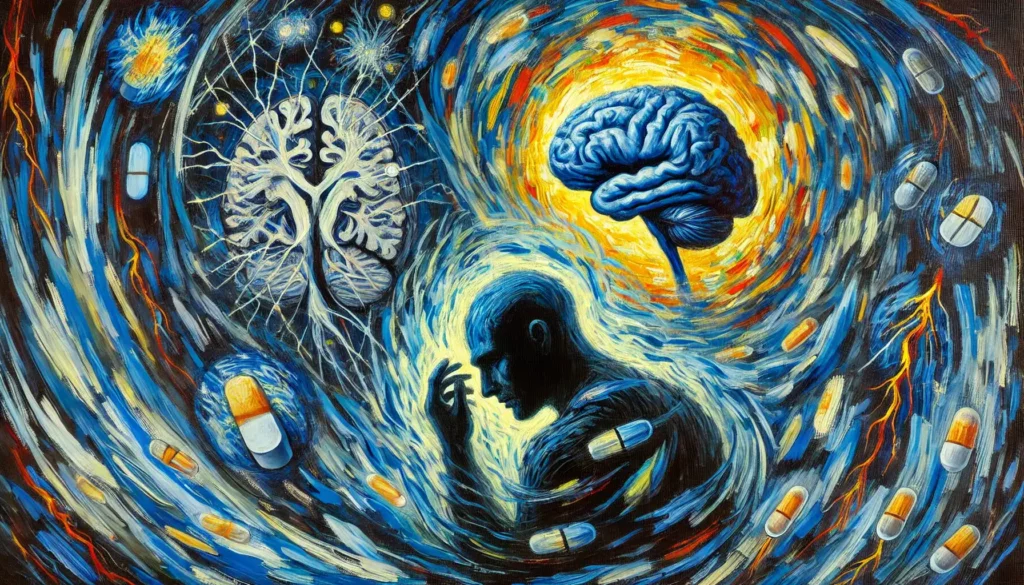Addiction has long been misunderstood, with blame for its existence typically falling to the individual suffering from it. It has often been seen as a failure of character, a sign of weak willpower, or simply a series of bad choices. Yet, with advances in neuroscience and medical research, we now understand that addiction is a complex disease that alters the brain, making it incredibly difficult for those affected to stop using substances, even when they desperately want to.
At Greggs Gift, we and the agencies/resources we support, work daily to assist young adults struggling with substance abuse. We know it is not a moral failing; it’s a medical condition that requires compassion, treatment, and long-term support. Understanding the science behind addiction is key to reducing stigma, sadly common. This can amount to character assassination, making the sufferer appear to be solely, consciously responsible for this affliction. The result can include a poorer level of care or even a reluctance to seek care, fearing the negative attitude that may accompany the sufferer. We encourage effective interventions, helping families and donors grasp the urgent need for resources and advocacy. This article is another attempt to do just that.
Addiction Hijacks the Brain
Let’s start here, with the ‘air traffic controller’ of all things human. The human brain is an intricate network of neurons, neurotransmitters, and reward systems designed to reinforce survival behaviors—like eating, socializing, and reproduction—by making them pleasurable. When someone uses addictive substances, these same reward pathways in the brain are activated but to a far more intense degree than natural rewards ever could.
Dopamine: The Chemical Messenger of Reward
One of the most crucial neurotransmitters involved in addiction is dopamine. Often called the “feel-good” chemical, dopamine is released in the brain’s reward center, the nucleus accumbens, whenever a person engages in enjoyable activities. Sadly, drugs and alcohol flood this system with unnaturally high levels of dopamine, creating an intense rush of pleasure and, as a result, reinforces the behavior.
Over time, the brain adapts to these excessive dopamine surges by producing less of it naturally or by reducing the number of dopamine receptors. This adaptation, known as tolerance, means that the person needs more of the external substance to achieve the same pleasurable effect. Ironically, over time, they may take drugs or drink alcohol not to feel high, but just to feel normal.
The Prefrontal Cortex: The Brain’s Decision-Maker
Another major area affected by addiction is the prefrontal cortex, which is responsible for decision-making, impulse control, and judgment. In a healthy brain, this region helps people weigh the consequences of their actions. But in an addicted brain, its function is impaired, making it harder for a person to resist cravings or consider long-term consequences. This is why telling someone with addiction to “just stop” is as ineffective as telling someone with diabetes to “just produce more insulin.” That region of their brain, formerly a strong ally to make good decisions, is now impaired.
Genetics and Environment: The Perfect Storm
Recent research suggests that genetics play a significant role in addiction. Studies on twins, adopted children, and family units have found that up to 50% of a person’s risk of developing an addiction can be attributed to genetic factors. Some individuals have genetic predispositions that make their brains more susceptible to substance dependence, much like others may be more likely to develop heart disease or depression.
But genetics alone do not determine fate. Environmental factors—such as trauma, stress, peer pressure, and early exposure to drugs—also contribute to addiction risk. Adolescents and young adults, whose brains are still developing, are particularly vulnerable. In a terrible bit of irony, the continued brain development of young adults means that early drug use can alter brain circuits permanently, increasing the likelihood of lifelong addiction.
Withdrawal and Cravings: The Body’s Response to Dependence
As you probably know, as addiction progresses, the body becomes dependent on the substance, leading to withdrawal symptoms when drug use stops. These symptoms, all negative, vary based on the substance, but can include:
– Intense anxiety and depression
– Nausea and vomiting
– Muscle pain and tremors
– Insomnia
– Seizures (in severe cases)
Cravings—strong, persistent urges to use the substance again—are another hallmark of addiction. These cravings are driven by changes in brain chemistry and can be triggered by stress, certain environments, or even specific people. The strength of these cravings makes relapse a common part of recovery, underscoring why addiction treatment requires ongoing support rather than simple detoxification.
Addiction as a Chronic Disease
The American Medical Association (AMA), the National Institute on Drug Abuse (NIDA), and the World Health Organization (WHO) all recognize addiction as a chronic disease, not a moral failing. In fact, it shares many characteristics with other chronic illnesses, such as:
– Relapse and Remission: Like diabetes or hypertension, addiction has periods of improvement and setbacks. A relapse is not a sign of failure but an indication that treatment needs adjustment.
– Biological and Behavioral Components: Addiction affects both physical health and behavior, much like asthma or heart disease.
– Need for Long-Term Management: Just as a person with heart disease requires lifestyle changes and medication, those with addiction benefit from therapy, medical treatment, and social support to manage their condition. At the end of this article, you’ll see a few examples of treatments that have proven their positive impact for substance abuse.
Breaking the Stigma: How We Can Help
Despite the overwhelming scientific evidence, social stigma remains one of the biggest barriers to effective addiction treatment. Many people still believe addiction is a choice, making it harder for those suffering to seek help.
As donors, advocates, and family members, we have the power to change this narrative. By supporting addiction recovery programs, funding scientific research, and spreading awareness, we can offer young adults the resources they need to break free from addiction and reclaim their lives.
Gregg’s Gift is committed to providing hope and healing to young adults struggling with substance use disorder. Through education, treatment access, and community support, transportation and more, we can help individuals and families navigate this difficult journey. But we can’t do it alone.
If you believe, as we do, that addiction is a disease that deserves treatment, compassion, and funding, consider making a donation today. Your support helps us provide life changing and life-saving interventions, fund educational programs, and advocate for policies that treat addiction as the medical condition it is—not a moral failing.
Together, we can make a difference. Together, we can save lives.
As an FYI, here are a few very effective techniques we support that may be ideal for someone you care for now:
Virtual Therapy and Telehealth Services
The digital revolution has transformed healthcare, and addiction treatment is no exception. Virtual therapy has become a game-changer, especially for young adults who may be more comfortable with technology than traditional in-person counseling. Online platforms provide access to licensed therapists who specialize in addiction treatment, allowing individuals to receive care from the comfort of their homes.
Key Benefits:
- Accessibility: Young adults in remote areas or those without reliable transportation can access therapy easily.
- Anonymity: The stigma surrounding addiction can be a barrier to seeking help. Virtual therapy offers a private and discreet solution.
- Cost-Effectiveness: Online therapy often costs less than traditional in-person sessions, making it accessible to more families.
Peer Support and Mentorship Programs
The value of peer support in addiction recovery cannot be overstated. Connecting with others who have experienced similar struggles can provide a sense of understanding and hope that is often difficult to find elsewhere.
Key Features of Peer Support Programs:
- Mentorship: Pairing young people in recovery with mentors who have successfully navigated their own journeys.
- Support Groups: Facilitated group sessions where participants can share experiences and encouragement.
- Accountability: Regular check-ins and mutual support help prevent relapse.
Virtual Reality (VR) Therapy
Virtual Reality is one of the most exciting innovations in addiction treatment. By simulating real-world scenarios, VR therapy helps individuals practice coping strategies in a controlled environment. “Controlled environment” is a critical component here.
Applications of VR in Recovery:
- Trigger Exposure: Participants can safely confront and manage triggers in a virtual setting.
- Relaxation Training: Guided VR experiences help reduce stress and anxiety.
- Skill Building: Scenarios teach problem-solving and communication skills essential for recovery.

